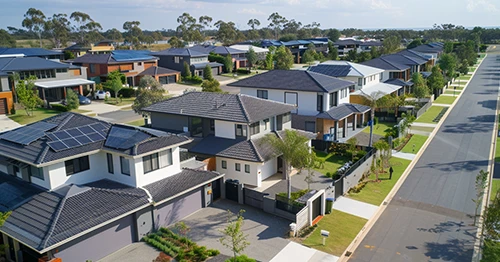Updated: 13 Jan, 2025
CoreLogic’s Home Value Index recorded a 0.8% rise in September. Since a trough in January, the national index has recovered by 6.6%, but home values still remained 1.3% below the record highs from April last year.
Adelaide recorded the highest capital gain for the September quarter, at 4.3%, followed by Brisbane and Perth at 3.9% and 3.6%, respectively. On the other hand, Hobart experienced a 0.2% fall over the quarter, reaching a cyclical low.
CoreLogic’s research director, Tim Lawless, notes the performance of the housing market in each city reflected the underlying supply dynamic. “The three capitals recording the highest capital gain each have advertised supply levels that are around 40% below their previous five-year average. Advertised supply levels across Hobart, where values are still trending lower, have been holding above average since June last year and were almost 40% above the five-year average.”
Growth Variations Across Market Segments
The upper quartile of the capital housing market led the slowdown in the pace of growth. The quarterly rate of growth across upper-quartile dwellings eased back to 2.3%, while the lower-quartile growth rate accelerated to 3.2%.
In Sydney and Melbourne, the broad middle of the market recorded the highest growth, after both markets had previously been led by the upper quartile. “Possibly, we are starting to see renewed affordability challenges deflecting more demand towards the middle of the market, where barriers to entry are lower,” Lawless said.
Regional markets continued to lag the capitals. Every rest-of-the-state recorded weaker growth conditions than its capital counterpart over the September quarter. The combined regional markets recorded a 1.1% rise in dwelling values through the quarter, which is less than half the gain experienced across the combined capital markets, at 2.5%.
Lawless explained, “Softer housing conditions across regional Australia look to be more demand driven, with the estimated number of home sales 6.5% lower than a year ago and 9.2% lower than the previous five-year average. In contrast, the estimated volume of home sales across the combined capital cities was 1.9% higher than a year ago and 6.3% above the five-year average.”
Property Market Highlights
Here’s what happened to Australia’s property market in September 2023.
- Advertised stock levels played a pivotal role in shaping housing values. Over the four weeks ending 24 September, new capital city listings surged 14% higher than from the same period in the previous year, and exceeded the five-year average by 8%.
- There was a notable increase in the total number of homes advertised for sale, with a 6.7% rise in the rolling four-week tally total listings above the low point in early July.
- Hobart, Canberra and Melbourne experienced an above-average number of homes on their markets, while Perth’s total advertised supply was 43.8% below the previous five-year average for this period.
- National rents rose by 0.7% in September, marking a 6.4% increase in the first nine months of the year and an 8.4% rise over the past 12 months. This growth occurred as vacancy rates fell to 1% in capital cities and 1.2% in regional Australia.
- Rental market growth moderated in most areas. Across combined capitals, the quarterly rent increase was 1.9% in the September quarter, down from 2.7% in the June quarter and 2.9% in the first quarter of the year.
The Future Of The Housing Market
CoreLogic’s outlook for the housing market remains positive, albeit with some potential slowdown risks.
- The crucial factor to monitor in the market is the level of advertised supply. Accelerated new listings are common in spring and early summer, and if this trend persists, it may provide buyers opportunities for increased choice, reduced urgency, and better negotiation leverage.
- A rise in advertised supply may not necessarily lead to a big increase in purchasing activity unless barriers to entry into the market are reduced – such as when consumer sentiment goes up or credit restraints are weakened.
- Despite borrowers being exposed to interest-rate hikes, mortgage arrears have been relatively contained thus far, but can be expected to increase.
- There is a looming housing undersupply. Annual dwelling approvals are currently at their lowest since 2013 (excluding the dip in mid-2020 due to COVID-19). Despite forecast above-average population growth over the next five years, there have been no early signs of a supply response.
- The persistent undersupply of housing is likely to support housing values in the medium term.







